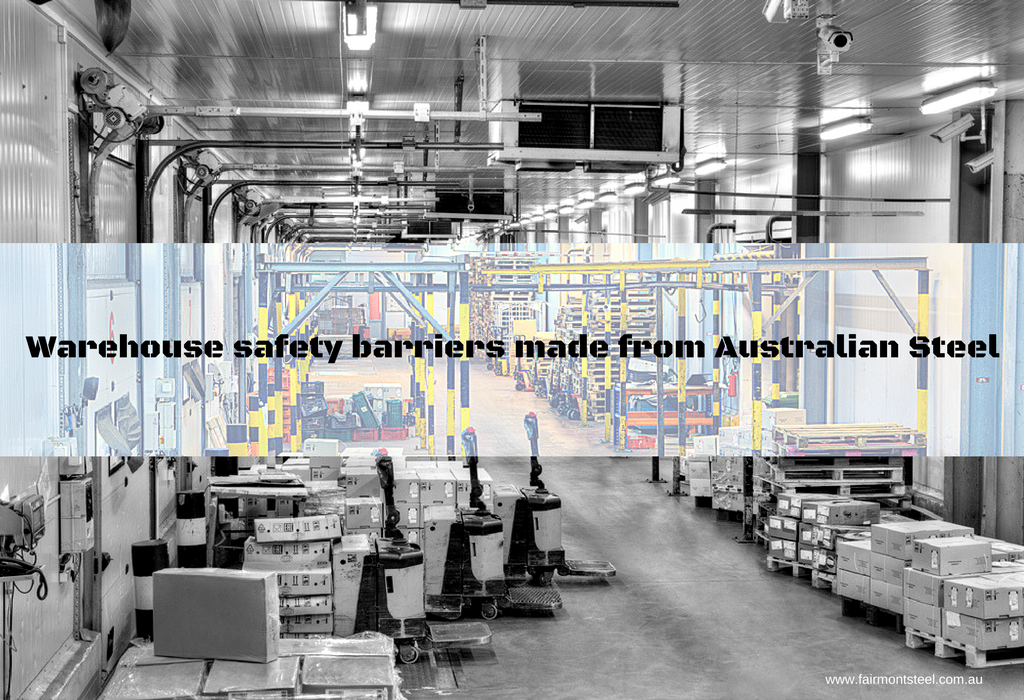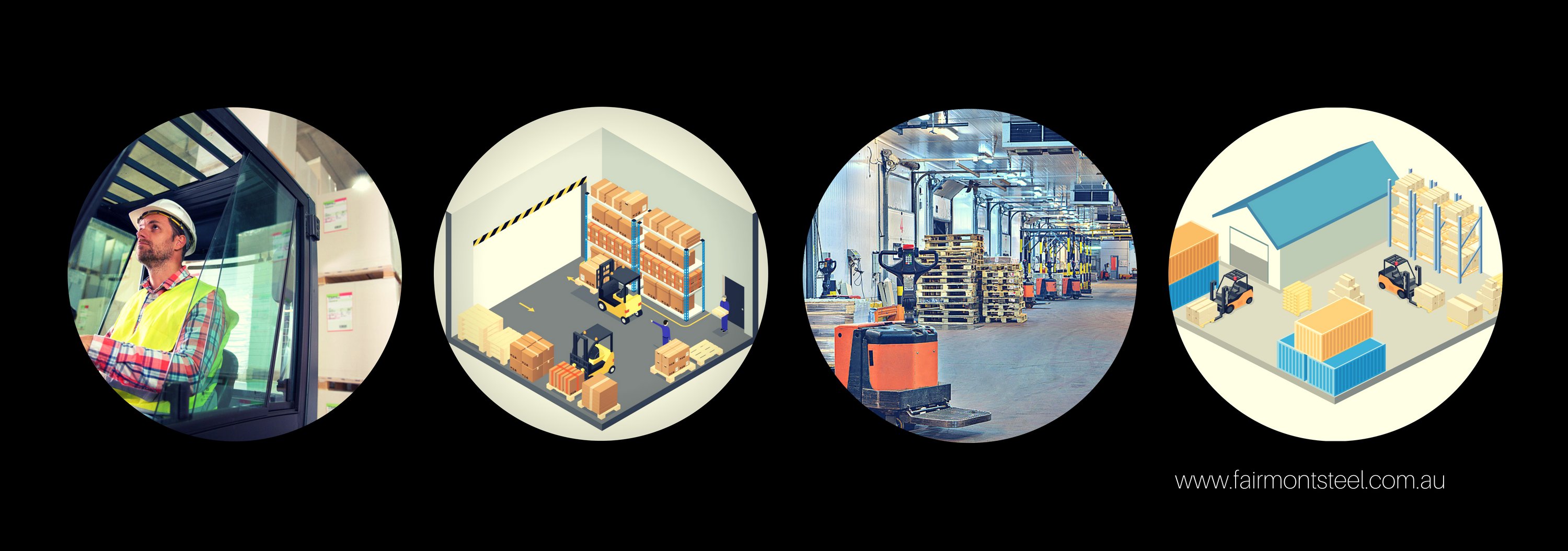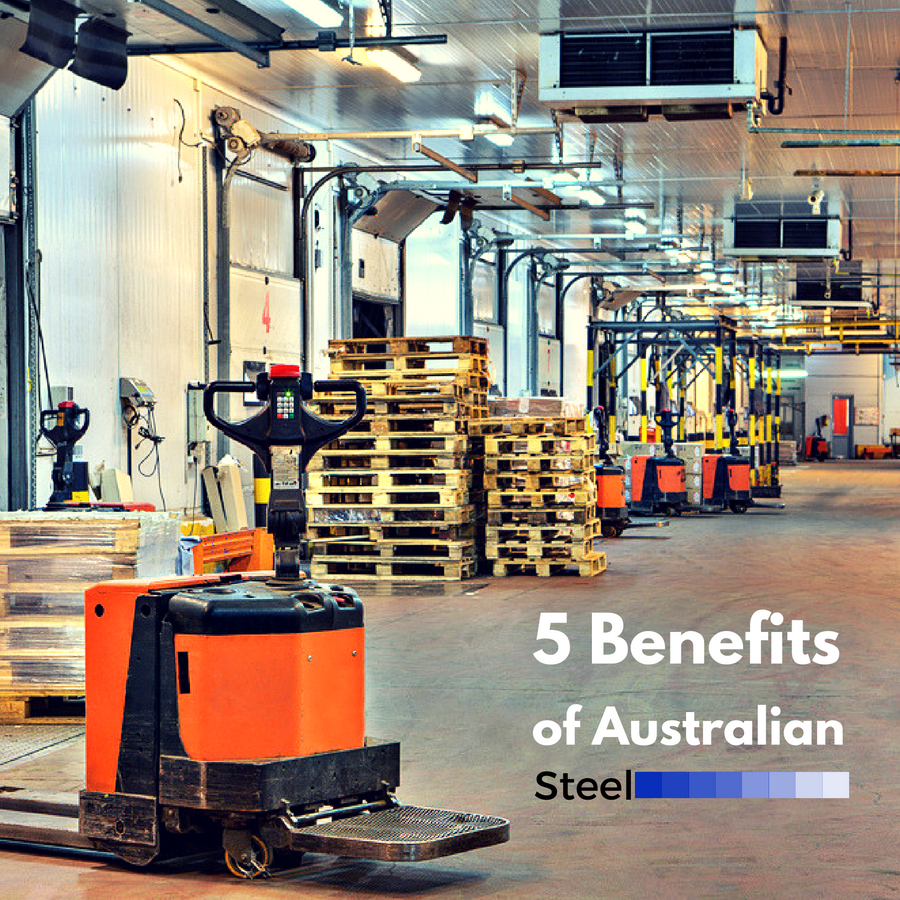Some recent reports state that the steel imported to Australia has been sometimes found to be of a sub-standard quality and is not compatible with the performance and quality standards of a developed country like Australia. It poses a great risk to human life. There have been instances of frauds in the documentation of the imported steel. So what do you rely upon when you are purchasing steel, say for warehouse safety barriers? The answer is simple. Safety barriers made from Australian Steel. With numerous benefits, steel is an ideal material for safety barriers in warehouses to increase safety and well-being of warehouse workers.
Why do you need warehouse safety barriers?
Warehousing work ranks as one of the most dangerous jobs in Australia. Of the total 164 Australian work fatalities in 2016, 59 of them occurred within the transport, postal and warehousing industry. This was the second highest fatality rate after the agriculture, forestry and fishing industry. These statistics show that the safety of warehouse workers is imperative and needs to be increased with the installation of safety barriers in warehouses.
Where do you need safety barriers in a Warehouse?
A full assessment of your warehouse will need to be conducted in order to determine where you need to install safety barriers. However, barriers certainly need to be placed in areas that are of safety concern, such as stairs and ladders or raised platforms. Steel products can be used to erect structural frames within the warehouse as strong shelving or storage space.
Top 5 Safety Issues to Address in the Warehouse Environment
1. Control Vehicle Movement
Install steel guardrails to mark out traffic lanes for forklifts and other warehouse vehicles. The guardrails can also function as protection of warehouse stock from any forklift accidents that may occur. These steel barriers can also control where vehicles are allowed to move and ensure the safety of pedestrians and vehicle operators as well as the warehouse stock. Forklift operators can tend to get comfortable in their vehicle and may not be aware of potential dangers in time. It is, therefore necessary to demarcate where it is safe for the vehicle to operate.
2. Manage Pedestrian-Vehicle Interaction
As with road regulations, it is important to specify rules where pedestrians and vehicles interact. Install safety barriers to separate pedestrian walkways from vehicle lanes. Where the two are likely to meet at a crossroads, put up clear signs to indicate the rules and warn both parties to keep a look out.
3. Loading/Unloading Vehicles
Safety barriers should be included in loading zones to prevent accidents from occurring. Ensure your staff is well-educated in warehouse procedures for loading and unloading to avoid accidents with vehicles or falling objects.
4. Fall Prevention for Vehicles
Steel safety barriers can be installed to prevent vehicles from falling off platforms or raised areas within the warehouse. This goes hand in hand with restricting vehicle access to certain areas of the warehouse where it may not be safe for them to operate efficiently.
5. Prevent Slipping, Tripping, and Falling
Slipping, tripping and falling are the most common of accidents that occur in warehouses. Thus, you need to protect your staff from any of these accidents by implementing the right safety measures. Railings are non-negotiable for staircases and unsafe ledges. You can also install non-slip tape along the floors where it commonly gets slippery to increase safety.
Australian steel has proven to be extremely beneficial for a variety of factors. Here are five of the top benefits of using Australian steel for your warehouse safety barriers:
1. Strong and Durable
Steel is widely known for being incredibly strong, durable and ductile. It can also be recycled numerous times with no detriment to its quality, making it ideal for long-term sustainable development. Being a strong material, steel is highly resistant to accidental damage and is easily repairable if any damage occurs.
2. Cost-Effective
Steel safety barriers are a cost-effective option to ensure the safety and well-being of your warehouse staff. Steel materials can help you to save money in plenty of ways without sacrificing the quality of your barriers. One of these cost-saving factors includes reduced freight costs. Steel is quicker to assemble compared to other materials such as concrete. Projects can thus, be completed much quicker, saving money on skilled professionals hired to construct and install your safety barriers. In addition, steel structures also require less maintenance, saving you the extra costs for on-going maintenance and site inspections.
The construction process of installing steel safety barriers being much faster reduces labour costs and ensures flexibility for future development by architects, designers, and developers. Additionally, steel material gives spaces a lighter and more open area, making steel structures ideal for modernisation. Steel can also be easily reconfigured, adapted or extended at a fraction of the cost of other materials. Furthermore, the demolition of steel structures is less harmful and more cost-effective than concrete structures and makes for easier redevelopment in future.
3. Supply Certainty
Steel supply in Australia is outstanding and guaranteed to meet your needs for any structural project. Since the transport of steel by road, rail or sea is direct, the logistics of steel supply are flexible and cost-effective. Adjustments to your steel products are also fairly simple to complete at any time. Whether it be cutting the steel or steel profiling, these adjustments can be made easily and economically.
4. High Standards
Australian steel is of the highest standard and covers all necessary aspects required in the steel production process. Factors that are monitored closely include the chemical composition, dimensional tolerance and mass tolerance of the steel as well as areas of workmanship. Australian steel production adheres to the occupational health and safety standards for injury prevention, making all Australian steel products safe to install in any warehouse.
5. Environment Friendly
Steel producers in Australia ensure that steel supply is sustainable. Supply chains are responsibly regulated, adhering to government regulations. According to the environmental stewardship program, contractors are required to employ environmental management systems that ensure the sustainability of steel production, making Australian steel the most socially responsible.
The safety of your warehouse and your staff is greatly important. By installing Australian steel safety barriers, you can increase the safety of your warehouse in a sustainable and cost-effective way.



